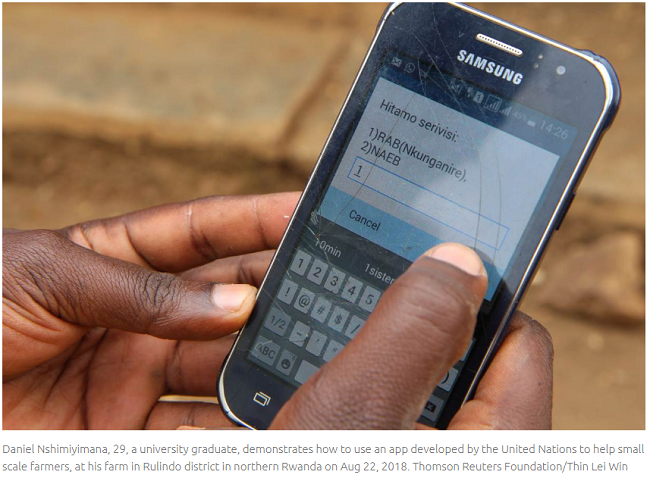Use of mobile phone in rural area for agriculture development.

In most developping countries, agriculture is the main source of the population’s income. Lack of acces to relevant informations leads to low yields, famers stress and low income.
Nowadays Information and communication technologies (ICTs) have the potential to transform agriculture in rural area. The focus here is to know How can ICT participate in the development of agriculture through mobile phone in rural milieu in Africa.
Can smartphones and its applications participate effectively in the development of agriculture in Africa rural area? Can the Unstructured Supplementary Service Data (USSD) code system participate in the development of agriculture in Africa rural area ?
We will start by showing how smartphones are participating in the development of agriculture, then we are going to present some of its limites in the rural milieu and at the end we are going to show how the USSD code can best partcipate in the development of agriculture in this milieu.
Smartphones and it applications has come with great innovations. The applications have been developed to help farmers reduce stress, acquire relevant informations on good agriculture practices, weather, quality input, markets tendency, etc.
Through social media, web sites and other applications, farmers can improve their skills, share experiences and even sale their products online using their smartphones. In Cameroon for instance from ‘’le document de conception du Programme de Promotion de l’Entrepreneuriat Agropastoral des Jeunes (PEA-Jeune)’’the population (youth and women) is essentially rural, and the rural youth are poorly educated.
In fact, more than 61% of Cameroon population live in rural area and about 78 % are less than 34 years old. Only 6 over 10 knows how to write and read in one of the official langages (French and English), and 48 % of the youth have a primary school lever. From analysis carry out in a small village in Cameroon in the Center Regional, at LEKIE Division, 15 famers (6%) over 250 have a smartphone. 10 out of 15 use it simply to receive and make calls, 3 know about social media but have limited knowledge on their uses and 2 (coming from the urban area) have an average knowledge on how to use the smartphones and its applications. Apart from that, smartphones are still expensif for farmers and there is a network problem in rural areas, this lead to poor or no internet connection.
So, dispite the multiple smartphones applications and web site put in place for agriculture development, this is going to best impact if this constraints are being taking into consideration. Nevertheless, most people in rural area often communicate through simple mobile phone which are less expensive and affordable.
In Cameroon there are three mobile operators which are more present in rural area and must farmers (about 98%) have in average two sim cards. The youths and women (active population groupe) have good knowledge on the manupulation of this phones when it come to dialing to making calls, to verify the sim number or their account/balance. In other to benefit bonus given by the operators they regularly use USSD code (*xxx# or #xxx#).
For agriculture development especialy in cacao commercialisation, to have the price of the day, farmers dail a given USSD code and they can have the price in just a few minutes. This system can best impact agriculture development, through it, farmers can have relevant informations on quality input, weather conditions, market tendency, also according to their zone and type of crop produce farmers can benefit quality and adapted advise on good agricultural practices through short message services (SMS).
Smartphones and their applications are innovations bringing good solution for agriculture development in other to help farmers to have acces to relevant informations. It participate in the amelioratiton of agriculture extension work and advisory services.
In Africa rural areas, this innovation is limited due to their expensiveness, to poor or absence of internet connection and farmers insufficiant knowledge on their utilisations. From these constraintes, innovators should think of alternatives that can best help farners and that is adapted to Africa rural areas such as development of tools easily accessible through simple phone that is provision of relevant informations through sms and the USSD code system.
By NGALEU YVES STEPHANE [email protected]
“The postings on this site are my own and do not necessarily represent FAO’s views, positions, strategies or opinions.”

